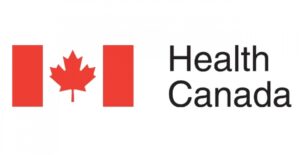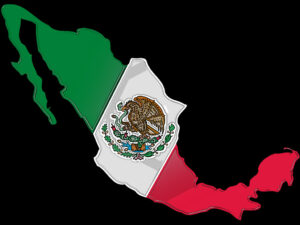Written on: December 1, 2018 by Cassandra Taylor
2018 has been a lively year in the global regulatory sphere. This year, the world-wide regulatory environment has proven to be dynamic and constantly shifting, with new regulations changing the requirements for achieving chemical compliance. For those of you who are curious about international chemical compliance, here is an overview of recent regulatory developments as countries move towards full implementation of the Globally Harmonized System of Classification & Labeling of Chemicals (GHS).
Canada concludes GHS transition and performs audit on WHMIS 2015 SDS
Dec. 1 marked the deadline for Canadian employers to ensure their facilities contain GHS format Safety Data Sheets (SDS) and labels according to the Hazardous Products Act (HPA) and the Hazardous Products Regulations (HPR). This means that the entire Canadian supply chain is now expected to comply with the Workplace Hazardous Materials Information System 2015 (WHMIS 2015) GHS requirements.

In view of the GHS transition, Health Canada has audited publicly available SDS for 188 hazardous products. The objective of this initiative was to obtain information about the compliance of SDS for hazardous products on the market according to the HPA and HPR. By identifying areas of non-compliance, Health Canada plans to develop compliance promotion initiatives such as guidance documents for industry, as well as provide focus areas for inspectors during SDS audits.
A variety of Canadian SDS were selected for review, ranging from simple (<2 hazard classifications) to complex (>4 hazard classifications) and from various provinces and territories throughout Canada. Each SDS was checked thoroughly for non-compliances such as false or misleading information as well as missing, incomplete or ambiguous data. Overall, there was an average of 26 non-compliances observed per SDS, with the lowest number on any document being two and the highest being 70.
Common issues found with the SDS were missing information, such as common chemical names, flammability or initial boiling range, as well as incomplete or ambiguous information, such as indicating odor descriptors like “mild” or “pungent.”
Health Canada has indicated that they are not looking to prosecute for these types of violations, but instead intend to educate and help bring suppliers of hazardous chemicals towards compliance. Based on the information obtained during this audit, industry can look forward to additional guidance publications to help achieve compliance with the requirements of WHMIS 2015.
In April 2018, Health Canada released an amendment to the HPR that allows industry to use prescribed concentration ranges on SDS to protect the actual concentrations of chemical ingredients. Previously, suppliers were required to submit a costly Hazardous Materials Information Review Act (HMIRA) claim to protect the exact percent of hazardous ingredients in their products. Between 2015 and 2018, Health Canada received a significant influx of HMIRA exemption claims. Following the amendment, suppliers who have registered a claim for concentration exemption under the HMIRA were contacted to seek their interest in potentially cancelling these claims. Those that have confirmed interest can expect to be contacted this winter to proceed with the cancellation process.
Health Canada has revealed some other changes in the pipeline pertaining to WHMIS and HMIRA. Health Canada will be updating the regulations to align with Revision 7 of the GHS, which was published by the United Nations in 2017. Other possible amendments include clarification, revisions and corrections to existing provisions in the HPR. The HMIRA has not been updated since it came into force in 1987. Modernization of various elements in the Act would allow for increased worker protection, better industry support and more efficiency in the administration of the program. Some specific changes to the HMIRA that have been suggested include updated enforcement tools and the removal of the department’s requirement to guarantee compliance of all SDS and labels submitted for CBI claims. As of April 1, 2019, the Service Fee Act will be implemented under HMIRA; this will result in an annual fee adjustment based on the consumer price index.
Mexico implements GHS
A mandatory standard implementing the 5th edition of GHS in Mexico came into force on Oct. 9, 2018. The Mexican Official Standard, NOM-018-STPS-2015, Harmonized System for the Identification & Communication of Hazards & Risks of Hazardous Chemicals in the Workplace (Sistema Armonizado para la Identificación y Comunicación de Peligros y Riesgos por Sustancias Químicas Peligrosas en los Centros de Trabajo) replaces the previous voluntary system and establishes new requirements for chemical hazard communication in the Mexican workplace.

Mexico has adopted all available building blocks in Revision 7 of the GHS. This means that hazard classifications that are optional in the U.S. and Canada, including all aquatic toxicity classifications, Acute Toxicity 5 and Skin Irritant 3 hazards, must be considered when generating SDS for Mexico. Mexico GHS also includes the Aerosol 3 classification for non-flammable aerosols, which has yet to be adopted in the U.S. and Canada.
A 16-section Spanish language SDS is required for hazardous products used in a Mexican workplace. An in-country telephone number for emergency services must be provided. Additionally, the standard sets out minimum pictogram sizes that depend on the distance of the observer from the label or sign. Workers are required to undergo training yearly, each time a new hazardous product is introduced and when an SDS or label is updated.
REACH registration period ends
May 31, 2018 concluded the 10-year registration period for existing chemicals under the European Registration, Evaluation, Authorization & Restriction of Chemicals (REACH) regulation. European suppliers have submitted approximately 90,000 registrations to the European Chemicals Agency (ECHA) representing chemicals manufactured in or imported to Europe at above one tonne per year. Suppliers with an obligation to register who have not yet submitted a dossier can no longer legally manufacture or import their substances in Europe.

While the registration period has technically ended, many registrations are still taking place for various reasons, such as late changes in lead registrant, data sharing disputes and delayed availability of test results. If a valid pre-registration is in place, the pre-registration number may still be used to contact the Lead Registrant through REACH-IT. If no pre-registration is in place, then an inquiry to ECHA needs to be submitted.
Enforcement activities called REACH-EN-FORCE 7 (REF-7) will be taking place in 2019 to check duties relating to registration and registrations of intermediates. Enforcement will include cooperation with customs authorities for imported goods to verify the registration obligations of companies manufacturing or importing chemicals.
While the REACH registration period is now over, this is not the conclusion in terms of obligations under REACH. Suppliers have a legal obligation to keep their dossiers up to date. Nexreg is keeping an eye out for new initiatives from ECHA to promote the maintenance of REACH registrations.
China to fully align with fourth edition of UN GHS
Chinese government organizations have released a national standard for Annexes 9 and 10 of the GHS 4th revision. The standard GB 36700, Chemicals Classification Guide for Aquatic Environmental Hazards, is effective from April 1, 2019. To learn about chemical classification criteria in China, you may refer directly to the GHS since all annexes are now covered by Chinese national standards, which are Chinese translations of the English language GHS, or feel free to contact a Nexreg representative. SPRAY